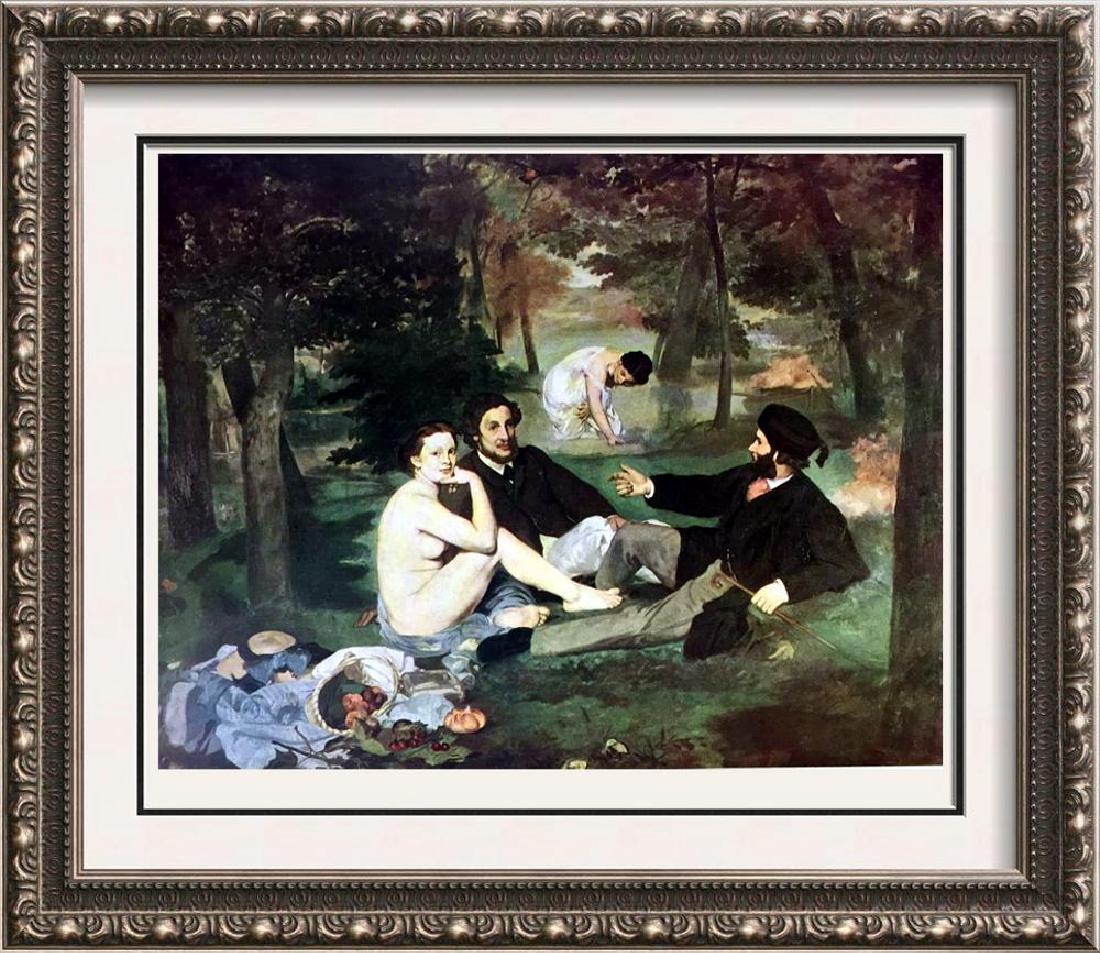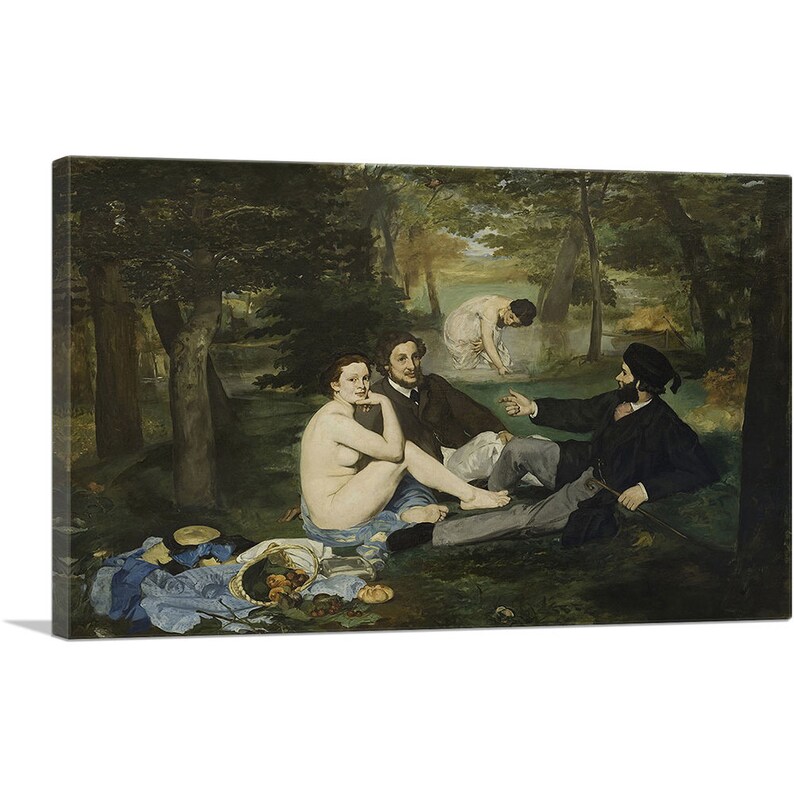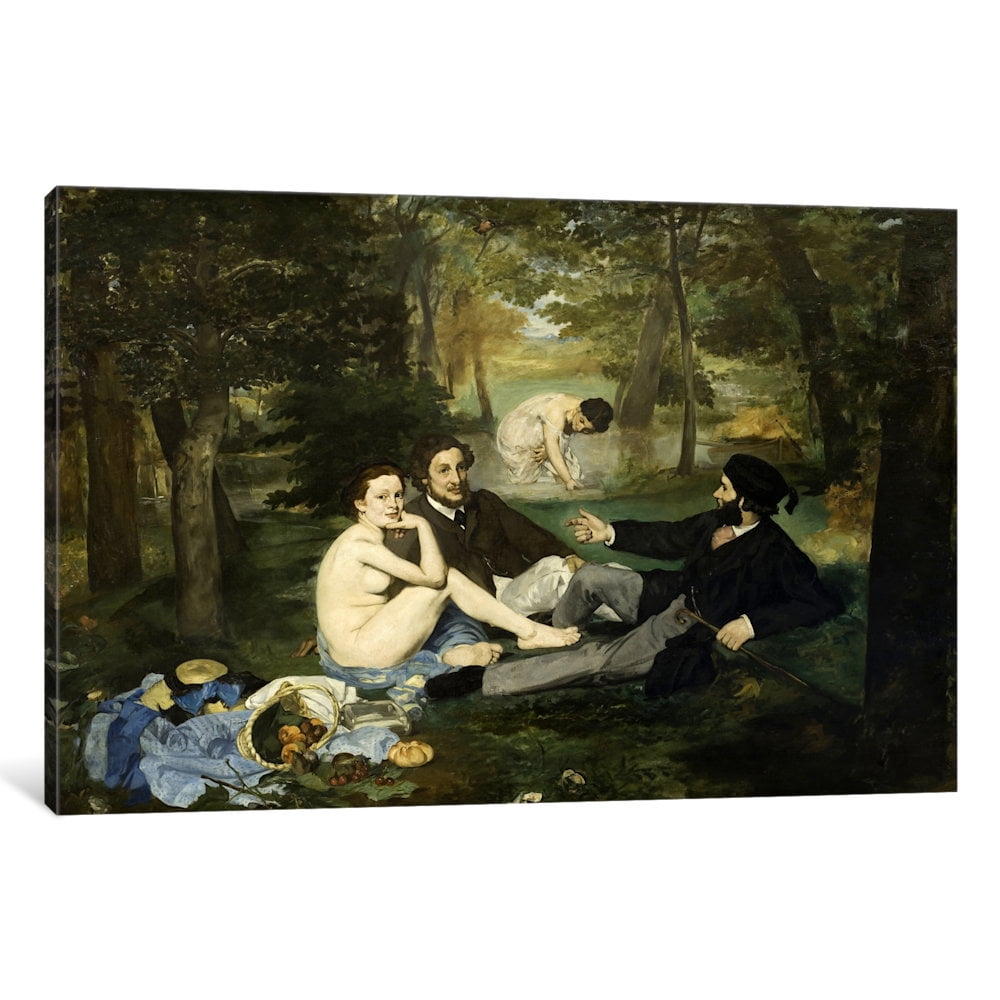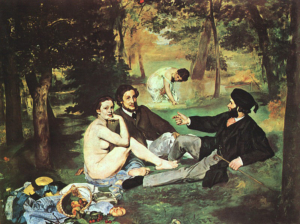

Judgment of Paris (fragment of an engraving).

After all, he copied the poses of three deities from an engraving made from a lost painting by Raphael. It seems that Manet did not come up with anything special. In the background, another woman is washing herself in her undershirt. Two dressed men are sitting next to her and talking about something.

In the foreground, a naked woman sits, having thrown off her bathing dress. It is difficult for the modern viewer to understand what so annoyed everyone in this work back in 1863. But even there, among the “Les Miserables”, the painting “Luncheon on the Grass” was perceived as the main misunderstanding of the exhibition. Therefore, Emperor Napoleon III ordered an exhibition for such works. This was the main exhibition where you could show the public your work.īut that year many were refused.

At first, his work “Luncheon on the Grass” was not accepted into the Paris Salon. In 1863, Edouard Manet suffered a double defeat.
#EDOUARD MANET LUNCHEON ON THE GRASS LICENSE#
This is a part of the Wikipedia article used under the Creative Commons Attribution-Sharealike 3.0 Unported License (CC-BY-SA).Edouard Manet. Nancy Locke referred to this scene as Manet’s family portrait. The other man is based on his brother-in-law, Dutch sculptor Ferdinand Leenhoff (nl). The male figure on the right was based on a combination of his two brothers, Eugène and Gustave Manet. The female nude is thought to be Victorine Meurent, the woman who became his favorite and frequently portrayed model, who later was the subject of Olympia. Manet often used real models and people he knew as reference during his creation process. Some assume that the landscape of the painting is meant to be l’île Saint-Ouen, which was just up the Seine from his family property in Gennevilliers. The figures of this painting are a testament to how deeply connected Manet was to Le Déjeuner sur l’herbe. Though Manet had claimed this piece was once valued at 25,000 Francs in 1871, it actually remained in his possession until 1878 when Jean-Baptiste Faure, opera-singer and collector, bought it for just 2,600 Francs. There is much still not known about the painting, such as when Manet actually began painting it, exactly how he got the idea, and how and what sort of preparation works he did. Zola also felt that such a reaction came from viewing art differently than "analytic" painters like Manet, who use a painting's subject as a pretext to paint. The nude is also starkly different from the smooth, flawless figures of Cabanel or Ingres.Ī nude woman casually lunching with fully dressed men was an affront to audiences' sense of propriety, though Émile Zola, a contemporary of Manet's, argued that this was not uncommon in paintings found in the Louvre. He did not try to hide the brush strokes the painting even looks unfinished in some parts of the scene. The style of the painting breaks with the academic traditions of the time. The man on the right wears a flat hat with a tassel, a kind normally worn indoors.ĭespite the mundane subject, Manet deliberately chose a large canvas size, measuring 81.9 x 104.1 in (208 by 264.5 cm), normally reserved for historical, religious, and mythological subjects. This impression is reinforced by the use of broad "studio" light, which casts almost no shadows. The roughly painted background lacks depth, giving the viewer the impression that the scene is not taking place outdoors, but in a studio. Too large in comparison with the figures in the foreground, she seems to float above them. In the background, a lightly clad woman bathes in a stream. In front of them, the woman's clothes, a basket of fruit, and a round loaf of bread are displayed, as in a still life. The two men, dressed as young dandies, seem to be engaged in conversation, ignoring the woman. Her body is starkly lit and she stares directly at the viewer. The painting features a nude woman casually lunching with two fully dressed men. A smaller, earlier version can be seen at the Courtauld Gallery, London. The piece is now in the Musée d'Orsay in Paris. Rejected by the Salon jury of 1863, Manet seized the opportunity to exhibit this and two other paintings in the 1863 Salon des Refusés, where the painting sparked public notoriety and controversy. It depicts a female nude and a scantily dressed female bather on a picnic with two fully dressed men in a rural setting. Le Déjeuner sur l'herbe (English: The Luncheon on the Grass) – originally titled Le Bain (The Bath) – is a large oil on canvas painting by Édouard Manet created in 18.


 0 kommentar(er)
0 kommentar(er)
